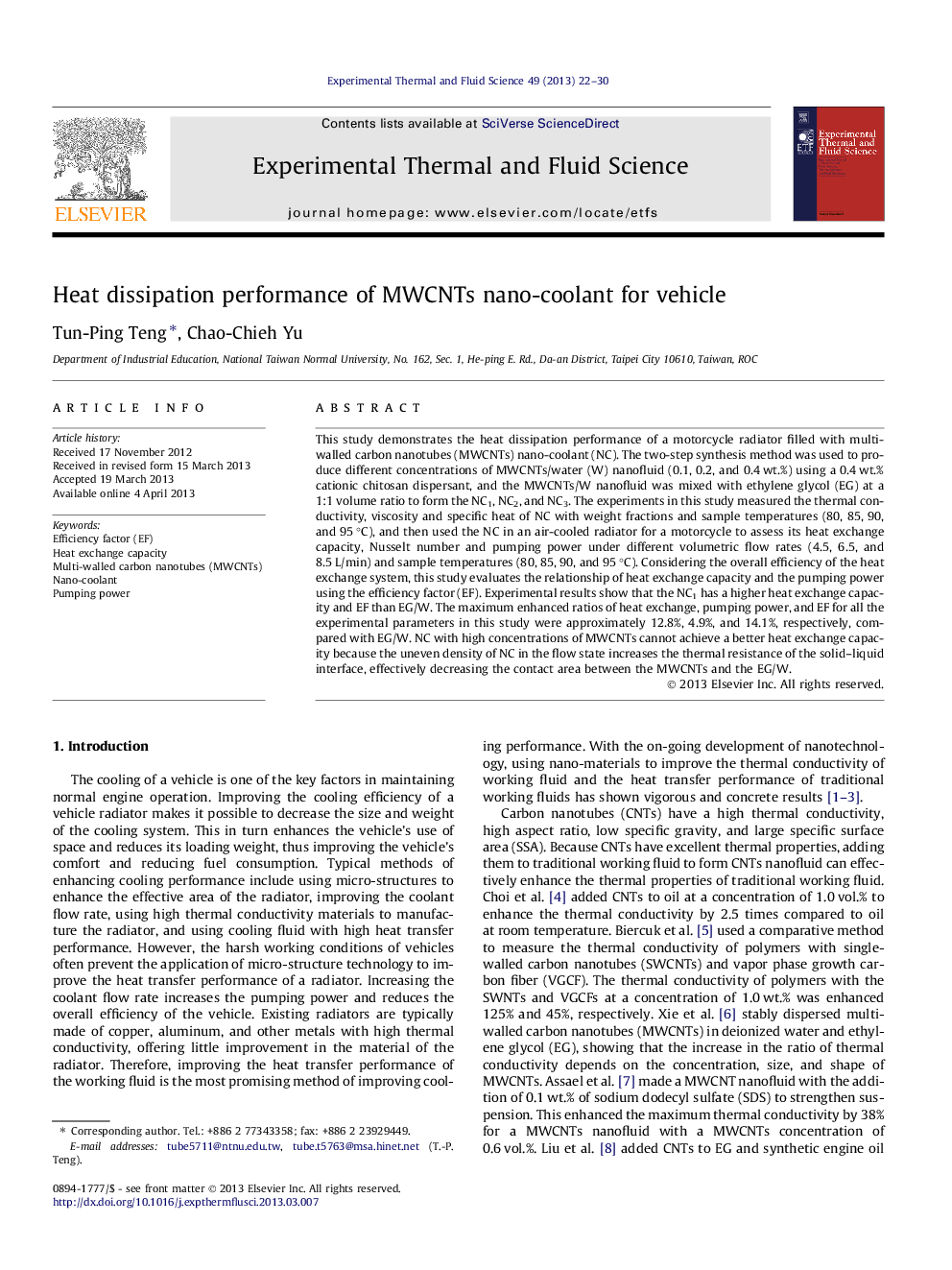| Article ID | Journal | Published Year | Pages | File Type |
|---|---|---|---|---|
| 651633 | Experimental Thermal and Fluid Science | 2013 | 9 Pages |
Abstract
This study demonstrates the heat dissipation performance of a motorcycle radiator filled with multi-walled carbon nanotubes (MWCNTs) nano-coolant (NC). The two-step synthesis method was used to produce different concentrations of MWCNTs/water (W) nanofluid (0.1, 0.2, and 0.4 wt.%) using a 0.4 wt.% cationic chitosan dispersant, and the MWCNTs/W nanofluid was mixed with ethylene glycol (EG) at a 1:1 volume ratio to form the NC1, NC2, and NC3. The experiments in this study measured the thermal conductivity, viscosity and specific heat of NC with weight fractions and sample temperatures (80, 85, 90, and 95 °C), and then used the NC in an air-cooled radiator for a motorcycle to assess its heat exchange capacity, Nusselt number and pumping power under different volumetric flow rates (4.5, 6.5, and 8.5 L/min) and sample temperatures (80, 85, 90, and 95 °C). Considering the overall efficiency of the heat exchange system, this study evaluates the relationship of heat exchange capacity and the pumping power using the efficiency factor (EF). Experimental results show that the NC1 has a higher heat exchange capacity and EF than EG/W. The maximum enhanced ratios of heat exchange, pumping power, and EF for all the experimental parameters in this study were approximately 12.8%, 4.9%, and 14.1%, respectively, compared with EG/W. NC with high concentrations of MWCNTs cannot achieve a better heat exchange capacity because the uneven density of NC in the flow state increases the thermal resistance of the solid-liquid interface, effectively decreasing the contact area between the MWCNTs and the EG/W.
Related Topics
Physical Sciences and Engineering
Chemical Engineering
Fluid Flow and Transfer Processes
Authors
Tun-Ping Teng, Chao-Chieh Yu,
